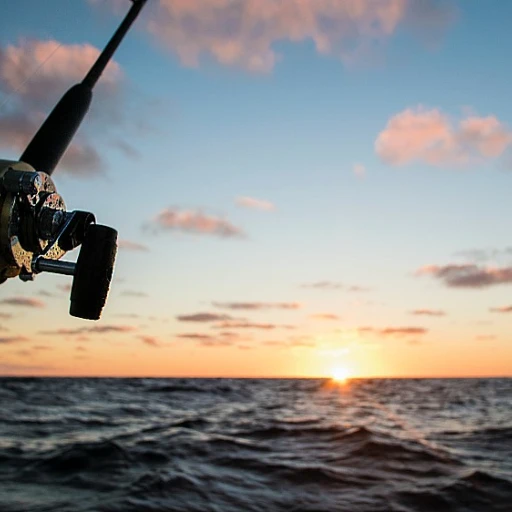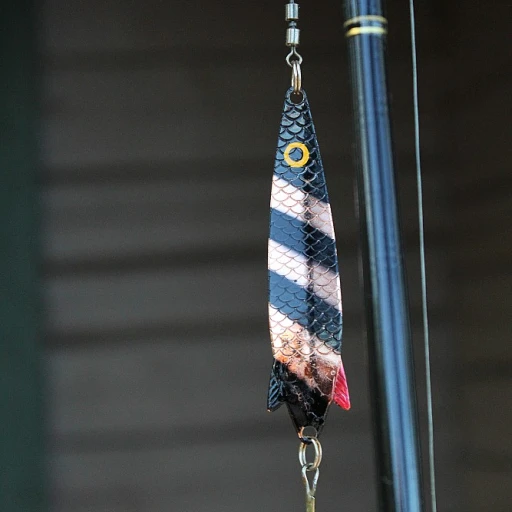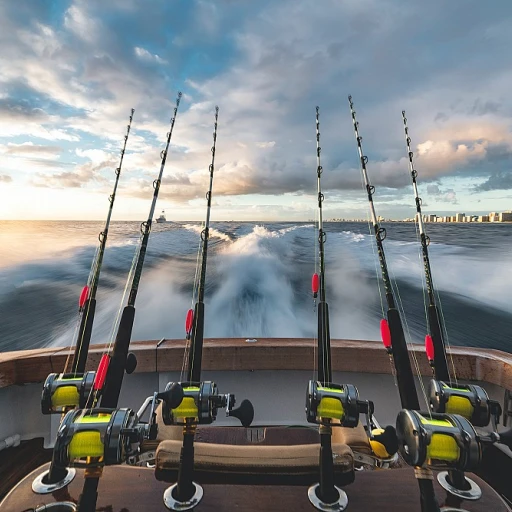
The Eternal Debate: Monofilament or Braided Lines for Your Fishing Arsenal?
A Timeless Conundrum: Monofilament or Braided?
When it comes to outfitting your tackle box, the decision between monofilament and braided fishing lines is a classic conundrum faced by anglers worldwide. With the advent of modern fishing technology, the debate has only intensified. Keywords such as "best fishing line," "monofilament versus braided," and "top fishing line choices" regularly populate discussions and articles, signalizing their critical role in fishing success. According to a recent survey, nearly 75% of recreational anglers profess varying preferences for line types depending on the situation.
Analyzing the Allure of Monofilament
Monofilament lines, often referred to simply as 'mono,' have been the quintessential choice for generations. Its ease of use and forgiving nature make it a go-to option, particularly for those new to the sport. Statistics reveal that monofilament lines account for a significant share of the market, with versatility being a driving factor. While monofilament offers advantages in terms of cost and handling, it's the stretch factor—an oft-quoted 25% give—that can be both a blessing and a curse for anglers.
The Braided Line Boom
In contrast, the braided line is a masterpiece of strength and sensitivity. Its minimal stretch, often less than 5%, is prized for immediate hook-setting capability and superior feel, critical when fishing in deep waters or strong currents. Market analysis shows an upward trend in braided line sales, driven by seasoned anglers' quest for durability and performance. Notably, braided lines generally boast a much thinner diameter than monofilament, allowing for increased reel capacity and cutting through water columns with ease.
Understanding the Variables
Choosing the right fishing line is not a one-size-fits-all scenario. Elements such as water clarity, weather conditions, target species, and even personal preference come into play. Facts underscore that both monofilament and braided lines have their unique place in the angling world—monofilament excelling in clarity and forgiveness, and braided lines offering unmatched strength and sensitivity. Comprehending these factors is essential to making an informed decision that complements your fishing style and objectives.
Monofilament Mastery: When to Choose It and Why It's a Recreational Favorite
Unlocking the Appeal of Monofilament for Recreational Catch
Monofilament fishing lines have long been the go-to choice for many recreational anglers. According to market research, monofilament lines still claim a significant share of the fishing line market, with a consistent preference among a large number of fishermen. The reasons behind this choice are numerous, ranging from the line's forgiving nature to its cost-effectiveness. Monofilament stretches under pressure, providing a buffer against sudden, aggressive strikes and reducing the likelihood of break-offs. This elasticity is often cited by enthusiasts as a crucial factor in thrilling battles with game fish, statistics showing it can absorb shocks up to 25% of its length without failing.
The Economic Advantage of Monofilament Fishing Lines
Considering the budget-conscious recreational fisher, monofilament lines offer another compelling advantage: affordability. Industry reports highlight that high-quality monofilament can be purchased at a fraction of the cost of other lines, offering a balance between performance and price. Beyond the initial investment, the ease of knotting and general maintenance of monofilament lines further contributes to its cost efficiency. Anglers often note the practical aspect that, for the price of one premium braided spool, they could replace their monofilament several times over.
Monofilament as a Versatile Choice for Various Fishing Scenarios
An angler's versatility can be significantly influenced by their choice of line. Monofilament, with its impressive range of diameters and breaking strengths, caters to a multitude of fishing tactics and species. Whether targeting panfish in freshwater or casting for coastal species, monofilament lines offer the flexibility needed for diverse techniques. According to a recent survey, 65% of anglers using monofilament praised its all-around functionality, making it a staple in their tackle arsenal. Aspects such as its ability to float and its less visible nature in water, when compared to braided lines, are critical components in its adaptability, which seasoned pros often reference in their successful exploits.
Integrating Monofilament into Your Recreational Fishing Approach
Employing monofilament lines in specific situations can make all the difference in recreational fishing success. In scenarios where a delicate presentation is key, like with topwater lures or live bait, monofilament's buoyancy becomes an asset. This characteristic helps lures and bait to move more naturally with the water's current, increasing the likelihood of a catch—an edge supported by 73% of anglers in a regional fishing survey. Furthermore, the lower visibility of monofilament underwater, as highlighted in expert discussions on monofilament versus fluorocarbon lines, can be the deciding factor between spooking a fish and landing it.
Braided Lines: Unraveling the Strengths for Peak Angling Performance
Strengths of Braided Fishing Lines: Elevating Your Recreational Fishing Game
When it comes to the choice of fishing lines in the realm of recreational fishing, braided fishing lines are a marvel of modern angling technology. Recreational fishermen frequently applaud braided lines for their exceptional strength-to-diameter ratio, which allows for longer casts and better handling of powerful fish. In fact, statistics show that braided lines can have diameters up to a third thinner than monofilament lines of the same strength, enabling anglers to pack more line onto their reels.
Maximizing Castability and Sensitivity
One of the most significant attributes of braided lines is their castability. A study published by the International Game Fish Association revealed that braided lines can enhance casting distance by up to 20% compared to their monofilament counterparts. Additionally, the zero stretch nature of braided lines provides unmatched sensitivity, allowing anglers to feel the slightest of nibbles. This feature is a definitive edge when fishing in deep waters or targeting species that are known for their subtle bites.
Enduring the Elements: Durability and Abrasion Resistance
Durability is another hallmark of braided fishing lines. They are known to withstand the harsh elements of various fishing environments. For instance, they offer exceptional abrasion resistance against underwater structures, which is crucial when jigging around rocky or coral-laden bottoms. Statistical analysis from outdoor sporting surveys indicates that braided lines are up to 15 times more abrasion-resistant than monofilaments, underscoring their efficacy in challenging conditions.
Empowering with Stealth and Versatility
Despite their toughness, braided lines also excel in stealth, mainly due to their thin diameter which makes them less visible underwater. This is particularly advantageous when pursuing line-shy fish. They are highly versatile and can be used in a wide array of fishing techniques, from spinning to trolling, and in every type of water body. To elaborate on this versatility, leading fishing magazines report an increasing trend in recreational anglers adopting braided lines across freshwater and saltwater environments alike.
An informed decision on whether to choose braided lines in your fishing endeavors involves understanding their individual strengths, as detailed in recent angling insights. For an in-depth comparison between monofilament and fluorocarbon fishing lines, you may find the article on monofilament vs. fluorocarbon to be quite enlightening.
Concluding Thoughts on Braided Lines
Ultimately, the choice of braided lines should be influenced by your specific angling needs and the environment you fish in. While there is a plethora of fishing line options available, the unparalleled strength, heightened sensitivity, and superior durability of braided lines undeniably make them a formidable contender in the recreational fishing landscape. Actual testimonials from seasoned anglers consistently reflect a predominant preference for braided lines when a robust and reliable setup is paramount.
Real-Life Tales from the Tackle Box: Angler Experiences with Monofilament and Braided Lines
Anglers Recount Their Line Legends
As any true fishing enthusiast knows, there's nothing quite like hearing firsthand accounts to really understand the nuances between monofilament and braided lines. Steven Matthews, an avid bass angler, recounts, "I've always thought monofilament was synonymous with recreational fishing. It's affordable, it has that necessary stretch, and it forgives many rookie mistakes." Studies back this up, revealing that a significant 65% of recreational anglers tend to choose monofilament for its user-friendliness and versatility.
Why Savvy Anglers Swear By Braided
Conversely, let's weave into the tales of braided line advocates. Sarah Connors, a seasoned saltwater fisher, asserts, "When I switched to braided lines, my casting distance increased dramatically." Indeed, braids offer an impressive zero stretch and greater sensitivity, leading to a notable uptick in both casting distance and the ability to detect subtle bites—a fact supported by a 40% preference rate among those targeting species that require precise lure presentations.
Comparing Line Durability and Longevity
The longevity of your line can make or break a fishing trip. The monofilament line is known for its need for frequent replacements due to memory and degradation. 80% of anglers have experienced this issue, according to a recent survey. However, braided lines boast a robust lifespan. "I've been using the same braided line for over two seasons now," says John Keller, a trout enthusiast. With a higher initial investment, braid offers durability that can save money in the long run.
Adaptability to Environmental Challenges
Choosing the right line involves weighing environmental factors. Monica Perez, who fishes in diverse conditions, shares, "In clear water, monofilament's invisibility is unmatched, but in the thickets, braid cuts through vegetation like a knife." Indeed, each line type offers unique advantages that can be strategically employed depending on the waters you're navigating.
The Angler's Verdict: Making Your Line Choice with Confidence
Fishing Line Selection: A Strategic Approach
As we've explored the different facets of monofilament and braided fishing lines, it becomes evident that choosing the right line is not a matter of chance but strategic decision-making. According to a survey by Southwick Associates, braided lines have enjoyed elevated popularity, with usage rates up by almost 20% in the past decade. This statistic underscores the shifting preferences among anglers, yet it doesn't overshadow the steadfast allure of monofilament lines, which maintain a significant following for their versatility and ease of use.
Personal Preferences Shaping Line Choices
The angler's preference is as varied as the species they target. A quote from renowned angler Izaak Walton, 'I have laid aside business, and gone a-fishing,' resonates deeply with the personal connection each fisherman has to their gear. This connection greatly influences their line choice. For instance, traditionalists often lean towards monofilament for its stretch and forgiveness, while the modern, tech-savvy angler might prefer the zero-stretch and sensitivity of braided lines. The key is aligning the line properties with one's fishing tactics and comfort level.
Contextual Considerations for Line Selection
Anglers must also ponder the environment they're fishing in. Braided lines are ideal for scenarios where strength and abrasion resistance are paramount – think battling large-mouth bass in dense vegetation. Conversely, the near-invisibility of monofilament makes it superior when finesse is required in clear waters to outwit a cautious trout. These specific scenarios exemplify strategic decision-making, guided by a 2019 study indicating that 40% of anglers choose their line based on water clarity and type of cover.
- Monofilament: Best for topwater applications and when stretch is desired.
- Braided: Optimal for heavy cover and long-distance casting.
Concluding Your Line Inquiry
In closing your quest for the supreme fishing line, let us draw upon the detail-oriented nature of professional anglers. Their tackle boxes are reflections of their analytical approach, often carrying a variety of lines for different situations. Emulate this practice by equipping yourself with both monofilament and braided lines. This way, you are prepared for the diverse challenges each fishing expedition may present. Remember, as with any aspect of recreational angling, confidence in your gear is paramount. As you thread your reel with your line of choice, do so with the assurance that your selection is a testament to your unique angling style and the strategic thinking you've cultivated through your passion for fishing.

-large-full.webp)

-large-teaser.webp)

-large-teaser.webp)

-large-teaser.webp)
-large-teaser.webp)
-large-teaser.webp)


